The Logic Primer™
by AGAAS
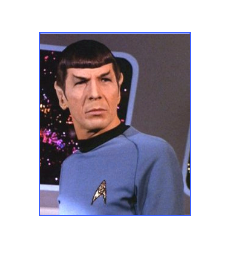
The Mr. Spock character and Star Trek® are registered trademarks owned by CBS and Paramount Pictures Corporation.
Several terrific troubleshooting methodologies are listed below. It is by no means an exhaustive list, although you may become somewhat exhausted learning how to apply the methods demonstrated. But like exercising your muscles, your mind also requires exercise and it can take time to apply these different ways of thinking. But if you're interested, it doesn't take long to see an improvement -- days or even hours can make a noticeable difference in how you think about things.
It's strange, but in western society there's sometimes a negative stigma attached to mental development and that's too bad. Not only is mental acuity a wonderful thing to develop, but it can be fun. No, really. Number or letter-based games, crossword puzzles and their ilk, or creative writing, learning a new language, learning to play the drums and other such things all improve your thinking ability while doing something "useful" and maybe even fun, though possibly noisy. Come to think of it, we may add some of those examples to the Logic Primer™ in the future. Well, perhaps not the drums.
While the methods below are useful, they require some fundamental concepts to be accepted first:
- Facts must be consciously separated from assumptions.
- Humans still do make mistakes.
- Redundant machines that are not supposed to make mistakes, will.
- The politics of a given situation can be addressed later, but not during troubleshooting.
- Complicated systems accumulate enough unlikely problems that over time, an unlikely problem is likely.
In short, trust nothing, at least for the purposes of problem-solving. Most of us have some natural ability in one or two of the techniques below already, even if you've never deconstructed them in such a specific catalog. Some ideas just seem like plain common sense. But habit, fatigue, hesitation, personal uncertainties, internal culture, etc. can quickly and effectively quash many of our innate abilities to apply these concepts naturally. Others do not come quite so naturally, unless your name happens to sound a bit like Einstein or Aristotle.

Part of the 737 aircraft assembly line.
Courtesy of Boeing®
This is a simple explanation, but D&C algorithms can become quite complex, using the concept of recursion to continually calculate and verify smaller and smaller parts of the system. Some have proposed that in such applications, the name decrease and conquer is more reflective of the recursive nature of a software program to continually analyze successively smaller parts of the system until it locates the fault or verifies the process.
D&C has the benefit of helping keep the troubleshooting effort highly encapsulized to just the device under test, which can help reduce confusion during troubleshooting.
____________________________
Suppose a production line creates 1,000 finished goods per day, but for some reason, 1 in 1,000 is bad and no one knows why. How would you figure out where the problem lies? In this basic example, we could divide the production line in half, and look at the input and output of the first half, and see if any bad items occurred during the day. If not, then we would have some evidence the problem is occurring in the second half of the line. We would test the second half of the line by testing inputs and outputs, and could then divide the second half into two further parts if a problem is found, measuring the input and outputs for each of those halves, etc. until we localize the problem. Of course, computer algorithms, raw goods inspection, best-practices supplier standards, quality system like Six Sigma® or ISO, testing, training, employee feedback and many other systems are used to reveal problems, often before they even affect anything.
Return

Cause and Effect: What would you expect to happen next?
____________________________
Suppose you manufacture things. Recently, you changed part suppliers, retooled equipment, hired new employees and changed processes. Now defects have tripled. What's the cause? One way to analyze cause and effect is to apply timelines -- compare the dates when defects started to rise with the chronological order of the changes made. If changes were made over longer ranges of time, compare them to milestone events, such as when a beta process actually went online. There is a good chance you can soon marry the effect of too many defects with a very specific cause. And as you can see, advance planning of measurement points is also important to future problem solving.
Return


There is often a better way of doing things.
Of course, there are usually hurdles like technology, experience and cost that make it hard to implement your great idea. But you can often use lateral thinking to overcome those too! Many of the best examples of lateral thinking do not just solve a problem in a different way, but do so with a completely different process or technique. The real paradox is that while new ideas often do not require significant contemplation, habit keeps us from creating them. Habit is not a bad thing -- without it, we would be re-learning simple tasks everyday. But there is a skill to thinking originally. Kids can be very good at this, sometimes with interesting outcomes. For example, did you know your DVD player can double as a toaster?
A somewhat subjective concept, lateral thinking cannot simply be taught because it looks for non-conventional, non-status-quo ideas to solve a problem or improve a method. Many "why didn't I think of that" inventions are examples of lateral thinking. Of course, such ideas sound obvious only in hindsight. A significant degree of brainstorming, creativity or daring is often required.
____________________________
A famous story has it that the child of an H. J. Heinz® Company professional asked his father why people had to turn a ketchup bottle upside down and continually smack it to dispense ketchup, when instead all they needed to do was manufacture a bottle that was shaped differently, so that it always rested upside-down on its lid, allowing the ketchup to always dispense easily when opened. Hence, the invention of the upside-down ketchup bottle. But the other part of the story, rarely told, is that Heinz still must offer ketchup in traditional, upright bottles because the habits of many customers are so strong that they still prefer to keep smacking ketchup bottles that normally sit upright. With such a predominant habit entrenched in the minds of so many, even when a wonderful alternative has existed for years, you can see how difficult it can be to use lateral thinking for the original inspiration, because the desirability of a different ketchup bottle design was not universally desired or understood. Original observations as well as inspirations, and a certain degree of persistence, are all typically required to use lateral thinking to its maximum potential.
Some original and successful ideas that required lateral thinking would include Flickr®, the first major photo sharing website, the Segway® people mover, and the iPod®.
Return

A negative proof might be more conceptual than a practical technique, but it can be useful to prove certain outcomes, or even to serve as a reminder to not draw incorrect conclusions. For example, by assuming that all qualities of some situation are known to be good, then no problems exist, but this can invite incorrect assumptions, as some quality not previously known may be bad. Negative proof can still be used quite effectively, particularly when a great deal of effort has been expended trying to find a problem on a well-known situation. However, you must be certain of the conclusions you are drawing because the end result is only as accurate as a chain of conclusions drawn.
____________________________
Does life exist on any of the planets and moons in our solar system? Because scientists know what conditions are necessary for life on Earth, such as water in any of its solid, liquid or vaporous forms, or amino acids, or stable temperature ranges, etc., these things are then sought for on other planets by using the same techniques as would be used on Earth. Few our of solar system's bodies have any of the prerequisites for life, at least as we would know them on Earth, and therefore, we can assume that common lifeforms as we know them do not exist on the places we have explored, using negative proof.
Of course, that does not prove that life of some kind doesn't exist. Famous astronomer Carl Sagan’s intelligent axiom "Absence of evidence is not evidence of absence" is a powerful yet simple lesson -- and warning -- about making wrong assumptions in general. If we did not find the type of life we know of, or would have expected to find, and in the places we were looking for it, that doesn't mean life elsewhere doesn't exist. Of course, although we would like to know the absolute answer, not locating life as and where expected is still a useful conclusion, because it helps define what is and what isn't there.
Negative proof is best used with problems that require as few assumptions as possible, because it requires you to prove all the things which aren't so, rather than one thing that is.
Return
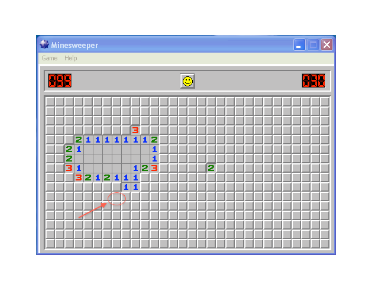
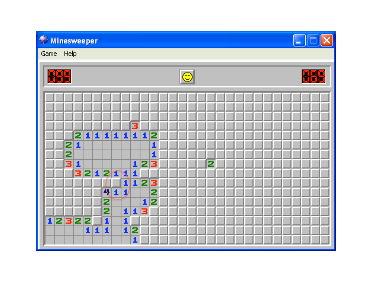
Images courtesy of Microsoft®.
For example, astronomers can determine the mass and general composition of a planet 2,000 light years away by looking at the effect the supposed planet has on the light of the star it orbits. They are unable to see the planet itself, but they can see the effect it has on the light emanating from the star, as it is interrupted by the variations in intensity, gravity and wobble of the planet as it rotates around the star.
____________________________
A less spectacular example is when you play a game like Sudoku or the computer game Minesweeper. You may have one or more squares where you do not know what the correct value of the number should be for Sudoku, or of the presence/absence of a mine in Minesweeper. But by filling in all the squares around it, you can eventually deduce the answer by ruling-out possibilities, determining where it cannot be, rather than where it can. Some logicians might argue this is just plain logic, but it's approach seem "backwards" to some because it requires verification of negatives rather than positives.
Of course, games such as these often have some element of guesswork -- not entirely unlike situations in real life.
In the top example, the circled square must not have a mine. The game's rules indicate that the numbers shown indicate the number of mines that are touching a square, in any direction -- up, down or diagonally. Because the square just above the one circled has 1's on either sides, we know that square must be hiding a mine, and therefore, the one below it must NOT have a mine, otherwise, it would have to have the number '2' to it's diagonal upper right.
The lower figure shows what happens when we click on the square that was circled. This is reverse logic -- we knew what wasn't there.
Return
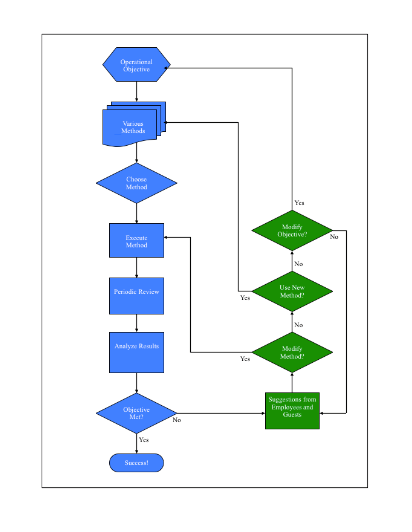
Courtesty AG Advice and Support, LLC.
Flow charts use various logic concepts, including propositional logic (PL) and fuzzy logic (FL). Propositional logic is essentially boolean logic -- there can only be two outcomes, either true or false. The outcome of that question determines your next step in the process. Is the temperature of a room at or warmer than 30 C? Yes, TRUE, then turn-on an air conditioner. If no, FALSE, then keep the air conditioner turned-off. Fuzzy logic basically uses if/then conditions. This has the advantage over PL in that it can make decisions upon ranges or quantities, allowing for more than two outcomes. For example, IF you have more than 90 widgets, stop making widgets. IF you have exactly 90 widgets, THEN ring a bell. IF you have 89 widgets or less, THEN continue producing more widgets. The three unique conditions of widget manufacturing here required the use of FL, as PL can only support two. These are simplified examples, and using the nesting of successive true/false or if/then statements, very complicated processes can be designed with essentially unlimited conditions.
Some might wonder why even use PL, because if FL can assess two conditions or more, it can do everything PL can do and more. The answer is simplicity. When designing or troubleshooting, it can be easier for humans to analyze a series of simple two-condition questions than a few multi-condition questions.
Flow charts also have overtones of divide and conquer because you can divide the process into successively smaller halves to verify inputs and outputs. Flow charts also help determine in advance how a system should be set-up, such as where error-detection should be implemented. If properly designed, a flow chart is like railroad tracks, steering a process where it must go, and where it must not.
____________________________
Computer programmers will tell you that a flow chart of even a basic software program can get complicated very quickly. The majority of work put into most computer programs is to write code to keep the program from doing unwanted activity, which often involves anticipating many unusual possibilities (negative proof is helpful with this). However, using an aide like a flow chart almost always saves time and offers superior results to just "winging it".
Return

Don't re-invent any more wheels than you have to. Simply look-up what you did the last time you encountered a problem. But this can be more challenging that it sounds. It requires a database with easily fillable and searchable fields, and also a common understanding of nomenclature by those who use it.
The best systems describe small details that seem unnecessary or obvious at the time of entry, but when looked-up several years later, are often crucial to understanding why you did something a certain way.
Return

See the HBR website.
Return
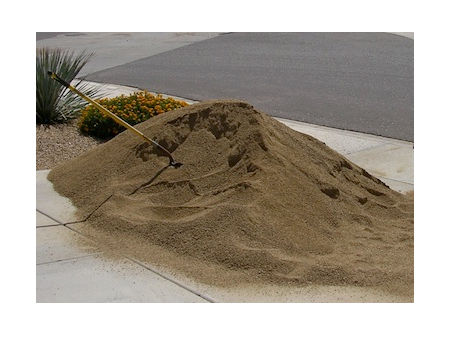
Lateral thinking can be helpful here, to try to find a more efficient method of doing something, as can a positive attitude. It can be tempting to put lots of effort into thinking about better ways at accomplishing a task, and indeed, perhaps a re-evaluation is in order. Sometimes, a higher priority problem must be worked on first, allowing you to take a needed break from the current task. It may be both relieving and helpful to change pace and adjourn over lunch, discussing the issues so everyone is on the same page.
There's nothing wrong with doing some or all of the above. But the most difficult step always seems to be that last one...carrying out the work to get things done. We know how rewarding it can be to sketch out a new product, idea, patent, or project, but at some point, you are going to have to go to work with some less-than-profound actions to finish it off. You may have to lie on your back with a flashlight at 4AM in the morning and think carefully about the mission-critical computer you're pulling apart, or be staring blurry-eyed at a computer display for the 10th consecutive hour. The hardest part is starting, after which your brain soon becomes accepting and even interested in finishing. With the right attitude, finishing the job can be a reward in itself.
A well-designed project or process will allow for it's participants to have the time and energy to get all of the basic yet required tasks to be accomplished, which helps keep the job interesting and the participants willing to find ways to improve it. That in turn can mean less work the next time.
Return
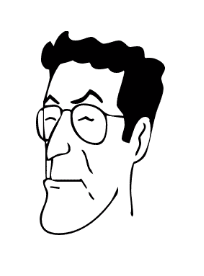
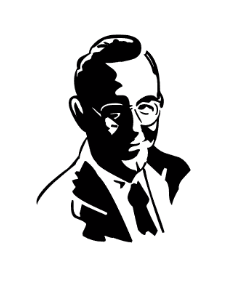
Negative... ...or Positive?
We have observed that remaining positive helps people to invent new and clever ideas, plus it helps keep them motivated to persistently work on a difficult problem. It also reduces unnecessary and sometimes damaging arguments. Airline pilots use positive vocal tones to keep their communications upbeat and alert, despite the requirement for down-to-business "sterile" cockpit procedures. Doctors, dentists, police officers and others often do the same.
Positive thinking can also prevent mistakes, save time, and correct beliefs that may have otherwise been stubbornly clung to.
____________________________
In the real world, we will always be surrounded by many different types of people, some not so positive. By taking the "high ground" with a positive attitude, you will naturally become central to the issue at hand, and become one of the more productive members of the team, saving you time, and often allowing you to see solutions that others will not. At the same time, the stress level of a positive thinker often lessens despite the extra responsibility they may find themselves gaining, due to their better overall confidence and ever-improving experience.
Return

Though hardly a profound suggestion, sleep time is frequently overlooked yet it's an important part of physical and mental health. When problem solving, one can rest just by taking a short break, a walk, or otherwise doing something to change what you are thinking about. Curiously though, the more urgent or difficult a problem is, the harder it is to rationalize 'resting' or otherwise defocusing from the situation at hand. While no one would advocate taking a coffee break during a network outage, you can change what you are thinking about by using different problem-solving techniques like those described within the Logic Primer page, or by taking a minute to explain or report the situation to someone else, forcing you to clarify your thoughts. This is also a form of task switching, as discussed further below.
There can be other good reasons to get enough rest. Well known scientists like Albert Einstein and Stephen Hawking, or just about any college student at final exam time, will tell you that if they fall asleep while considering a difficult problem or while trying to memorize something, they are often able to better remember, invent or solve problems by the time they wake up, having had their minds work "in the background" while sleeping.
Return
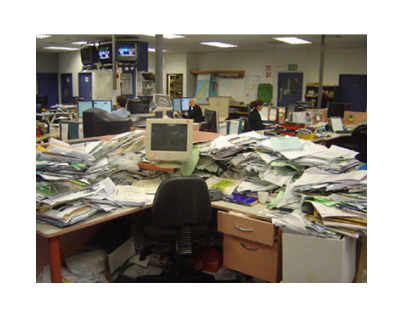
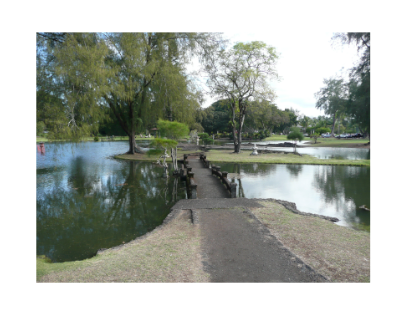
"Switching it up" a bit can later help you see things differently.
Task switching is a familiar concept to most of us in principle, but we are least likely to change tasks when an urgent or time-pressing matter is before us, as it appears to be a waste of time or it might mean putting our time into a lower priority task. Ironically, doing so could actually save time in the end, because a change can alter your current thought patterns. You change reference. A problem that has consumed hours of your time might now be fixed in only a couple of minutes, something many of us have seen when a new approach or different people are asked about an ongoing issue.
What if you do not have a nearby Zen garden to take refuge in when needed? You can often switch thinking gears with just a quick change of tasks or actions, such as with a "work break" where you continue with your work day but switch to doing a different thing i.e. maybe it's time to file or delete some of those emails you've been keeping. Either way still requires that you use some concentration, but the way you are concentrating changes. For example, we like to use the divide-and-conquer method to troubleshoot, but when unable to find a problem, we might use a work break to switch tasks by concentrating with reverse logic, focusing now on a different part of the system, or possibly even on a different problem entirely. When focusing once again on the first problem, our minds are now thinking in a different way than before. Problems and possibilities often just pop out, because we changed what we expected to see or even what we first believed.
Return
